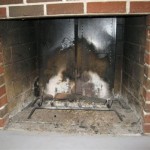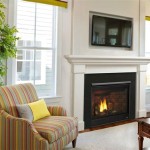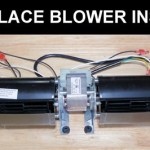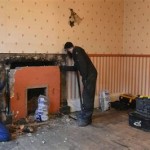Outdoor Fireplace Grill Grate: A Comprehensive Guide
The outdoor fireplace, once primarily a source of warmth and ambiance, has increasingly evolved into a functional outdoor kitchen centerpiece. At the heart of this transformation lies the grill grate, a crucial component that enables the conversion of a simple fireplace into a versatile cooking appliance. Understanding the various aspects of an outdoor fireplace grill grate – including materials, design considerations, and maintenance – is essential for maximizing its performance and longevity.
This article provides a detailed exploration of outdoor fireplace grill grates, offering insights into the factors that influence their selection and usage. It examines the role of material composition in durability and heat retention, explores the design features that enhance cooking efficiency, and provides guidance on proper maintenance practices to ensure safe and consistent operation.
Choosing the Right Material
The material composition of an outdoor fireplace grill grate significantly impacts its performance, durability, and suitability for different cooking styles. The most common materials used in grill grate construction are stainless steel, cast iron, and steel with porcelain coating. Each offers a unique blend of advantages and disadvantages.
Stainless steel grill grates are prized for their corrosion resistance and relative ease of cleaning. The inherent properties of stainless steel make it impervious to rust, a critical factor in outdoor environments where exposure to moisture is unavoidable. Further, stainless steel is less prone to food sticking, simplifying the cleaning process. However, stainless steel generally exhibits lower heat retention compared to cast iron, meaning it might take longer to reach optimal cooking temperatures and may experience temperature fluctuations more readily. Within stainless steel options, different grades exist, with higher grades offering superior corrosion resistance and longevity. 304 stainless steel is a common and reliable choice for outdoor applications.
Cast iron grill grates are renowned for their superior heat retention. This ability to maintain a consistent and high temperature is particularly advantageous for searing meats and achieving even cooking. The dense nature of cast iron allows it to absorb and distribute heat effectively, minimizing hot spots and ensuring uniform browning. However, cast iron is susceptible to rust and requires regular seasoning to protect its surface and prevent food from sticking. Seasoning involves coating the grate with a thin layer of oil and baking it at a high temperature. This process creates a protective polymerized layer that acts as a barrier against moisture and enhances the non-stick properties. Consistent maintenance is critical to preserving the integrity and performance of a cast iron grill grate.
Porcelain-coated steel grill grates offer a compromise between the durability of steel and the ease of cleaning associated with coated surfaces. The porcelain coating provides a protective layer that is resistant to rust and reduces food sticking. Steel provides the structural integrity and heat conductivity. While easier to clean than uncoated steel, porcelain coatings are susceptible to chipping and cracking, especially with prolonged exposure to high temperatures and abrasive cleaning methods. Once the coating is compromised, the underlying steel is vulnerable to rust, potentially shortening the lifespan of the grate.
When selecting a grill grate material, consider the frequency of use, the types of food to be cooked, and the level of maintenance required. For individuals who prioritize ease of cleaning and corrosion resistance, stainless steel may be the preferred option. Those seeking superior heat retention for searing and high-temperature cooking might find cast iron more suitable, provided they are willing to commit to regular seasoning and maintenance. Porcelain-coated steel offers a convenient alternative, but users should be mindful of the potential for coating damage.
Design Considerations for Optimal Performance
Beyond the material, several design features contribute to the overall performance and usability of an outdoor fireplace grill grate. These features include the grate's configuration, the spacing between bars, and the presence of any integrated accessories.
The configuration of the grill grate, whether it is a single, solid piece or multiple sections, can affect its ease of handling and cleaning. A single-piece grate is generally more robust and stable but can be cumbersome to maneuver. Multiple sections, on the other hand, are easier to lift and clean individually, but may be less structurally sound. The choice between these configurations often depends on the size of the fireplace and the user's preference.
The spacing between the bars of the grill grate is another crucial design consideration. Narrower spacing prevents smaller food items from falling through, making it suitable for cooking vegetables, seafood, and other delicate ingredients. However, narrower spacing can also restrict airflow, potentially hindering the combustion process and reducing the overall cooking temperature. Wider spacing allows for better airflow and is often preferred for grilling larger cuts of meat but may not be suitable for smaller items.
Some outdoor fireplace grill grates incorporate integrated accessories that enhance their functionality. These accessories may include adjustable height settings, which allow users to control the distance between the grate and the fire, thereby regulating the cooking temperature. Removable ash trays are another common feature, simplifying the process of cleaning out accumulated ash and embers. Some grates also feature built-in thermometers, providing a convenient way to monitor the cooking temperature. The presence of these accessories can significantly improve the user experience, but it is important to consider their durability and ease of use.
In addition to these features, the overall size of the grill grate should be carefully considered to ensure that it is appropriately sized for the fireplace. A grate that is too small will limit the cooking surface, while a grate that is too large may impede airflow and affect the combustion process. Measuring the fireplace opening and selecting a grate that fits snugly but allows for adequate ventilation is essential.
Maintenance and Safety Practices
Proper maintenance is essential for extending the lifespan of an outdoor fireplace grill grate and ensuring safe and consistent performance. Regular cleaning, rust prevention, and adherence to safety guidelines are all critical components of effective maintenance.
Cleaning the grill grate after each use is crucial for preventing the buildup of food residue and grease, which can attract pests and pose a fire hazard. The cleaning method will vary depending on the material of the grate. Stainless steel grates can be cleaned with a wire brush and soapy water. Cast iron grates should be scraped with a metal spatula and then lightly oiled to prevent rust. Porcelain-coated grates should be cleaned with a soft brush and mild detergent to avoid damaging the coating.
Rust prevention is particularly important for cast iron and steel grill grates. Regular seasoning, as described earlier, is the primary method for protecting cast iron from rust. For steel grates, applying a rust-inhibiting coating can help to prolong their lifespan. Storing the grill grate in a dry place when not in use is also recommended.
Safety is paramount when using an outdoor fireplace grill grate. Always ensure that the fireplace is located in a well-ventilated area and away from flammable materials. Use heat-resistant gloves and utensils when handling the grate and food. Never leave the fireplace unattended while it is in use. Keep a fire extinguisher or hose nearby in case of emergencies. Dispose of ashes properly after they have cooled completely. Educating all users on safe operation is crucial.
Periodic inspection of the grill grate is also essential. Check for signs of damage, such as cracks, warping, or rust. Replace the grate if any significant damage is detected. Regularly inspect the support structure of the fireplace to ensure that it is stable and capable of supporting the weight of the grate and the food being cooked.
By adhering to these maintenance and safety practices, users can ensure that their outdoor fireplace grill grate provides years of reliable and enjoyable cooking experiences. Neglecting maintenance can lead to premature wear, reduced performance, and potential safety hazards. A well-maintained grill grate is an investment in both the longevity of the appliance and the safety of the user.

Sunnydaze X Marks Square Fire Pit Grill Grate

Stainless Steel Bbq And Fire Pit Grates

Fire Pit Grill Grate Small Cooking Camp Accessories Canvascamp
Fire Pit Outdoor Cooking Grate Ideas Deer Hunter Forum

Campfire Grill Grate Double Layer Fire Pit Over Three Section Height Adjustable For Outdoor Open Flame Cooking Com

Vevor Campfire Grill Grate Double Layer 3 Section Height Adjustable Fire Pit For Outdoor Open Flame Cooking Skjkdjjxlcxzs3or9v0 The Home Depot

Adjustable Swivel Grill Grate Outdoor Fire Grates Ash Ember

Grill Grates Rough Rigid

Stainless Steel Bbq And Fire Pit Grates
Fire Pit Outdoor Cooking Grate Ideas Deer Hunter Forum
Related Posts








